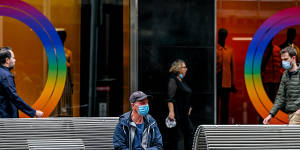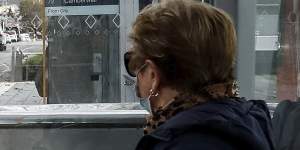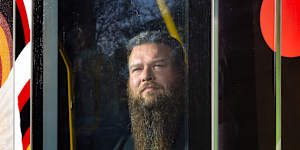Unfortunately,the same cannot be said however for our street furniture. Our stainless-steel seats,lighting,bins and tram shelters are functional but are entirely bland and generic. We interact with these city objects every day,yet they foster no community pride and conjure no sense of home. Their design has nothing to say about our creative and diverse city.

Stainless steel seating in Bourke Street.Joe Armao
With news that the City of Melbourne is,it is time to lift our ambition.
One of the most beguiling abilities of good architecture or design is its ability to conjure identity. We need to be unleashing this power on our street furniture so that it sings “Melbourne” the same way that Flinders Street Station,Federation Square or the MCG does. We should be able to look at these objects in isolation and feel they intrinsically belong in our vibrant city,like a yellow cheese stick across a freeway.
To achieve this,we need to be looking to our past for inspiration.
Ideally in any city we should be able to visually appreciate the layers of history. In Melbourne it is commonplace for our 19th and 20th century buildings to be interlaced and interwoven with contemporary alterations and additions.
These layers can be seen in places like the shot tower at Melbourne Central,the old GPO at Bourke Street and at the Shrine of Remembrance. These places tell a story,but this story is not complete. While our 19th and 20th century buildings are well represented,our city streets have very limited visibility of our Indigenous heritage.

Street furniture provides an ideal canvas to tell a story.Darrian Traynor
There are exceptions in places like Birrarung Marr,but far more needs to be done to properly embrace and recognise the Woi Wurrung (Wurundjeri) and Boon Wurrung peoples in our built environment. The refresh of our city’s street furniture gives us a chance to further embrace and celebrate Indigenous culture and history.
We have already seen repeatedly the richness that Indigenous art brings to multiple urban contexts. In 1991 Yorta Yorta artist Lin Onus was featured as part of the very first Art Trams series,which has now been as part of the RISING arts festival.
In 2016 an Indigenous group from Ballarat called the projected their artworks on to the Royal Exhibition Building as part of the White Night festival. This wealth of artistic expression that draws upon tens of thousands of years of culture is exactly the deep grounding that we need to see more prominently and permanently in our city.

Tiriki Onus inside the new art tram reproducing his father’s 1991 original work.Simon Schluter
Applying Indigenous thinking to our street furniture will need a considered approach. In some cases where subtlety is key,the visual motifs may be quite restrained,providing a gentle reminder of country. In other applications more substantial Indigenous expression could be pursued. Perhaps our future tram shelters could take inspiration from the outstretched wings of Bunjil the wedge-tailed eagle.
Beyond artwork there is also opportunity for expanding our collective understanding of Indigenous language and culture. Our future city furniture could be inscribed with Indigenous words or sayings that provide greater meaning. We could have benches that greet you with “Wominjeka”,the Woi-wurrung word for Welcome. There could also be opportunities to embed a QR code system to provide anyone curious with further information,or to connect them with the Koorie Heritage Trust at Federation Square.
Vitally important with such a concept is that a thoroughly respectful design process be undertaken. Our city would effectively be asking for a very valuable gift from the Indigenous community and this should in no way be taken for granted. It is an opportunity for trust to be strengthened.
Since Kevin Rudd’s apology to the stolen generations we have seen a gradual shift in our understanding of Indigenous culture. At times this progress has looked glacial,yet community attitudes are clearly evolving,as evidenced by the and our new federal government committed to the.
Perhaps for a football-mad city,the best indicator of societal change is that the Melbourne Football Club club for Indigenous round. In doing so they proved the point that when we embrace our Indigenous heritage,we strengthen our identity,not diminish it.
The same goes for our humble street furniture and our city fabric.